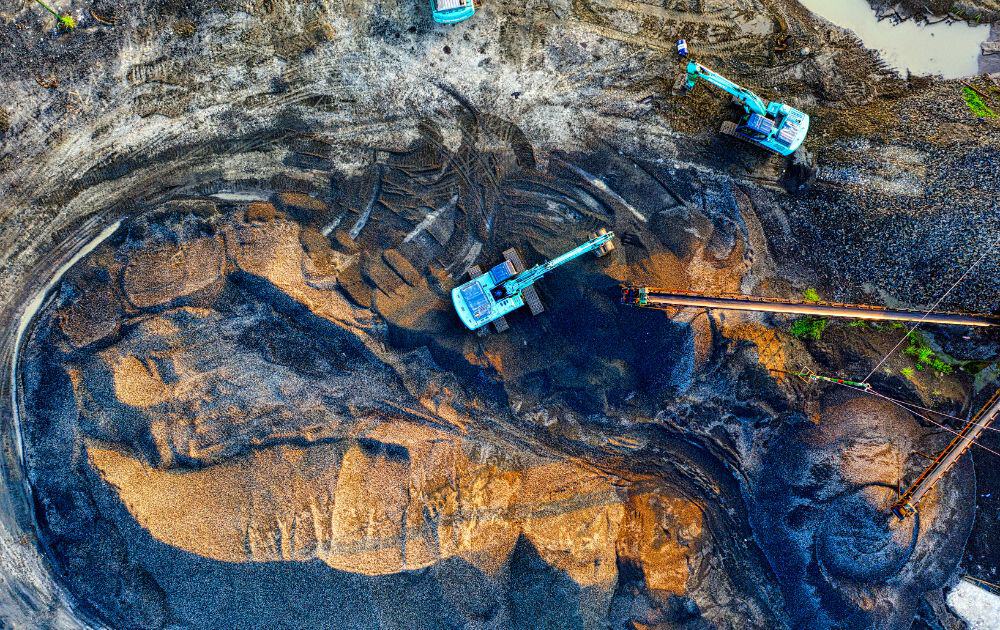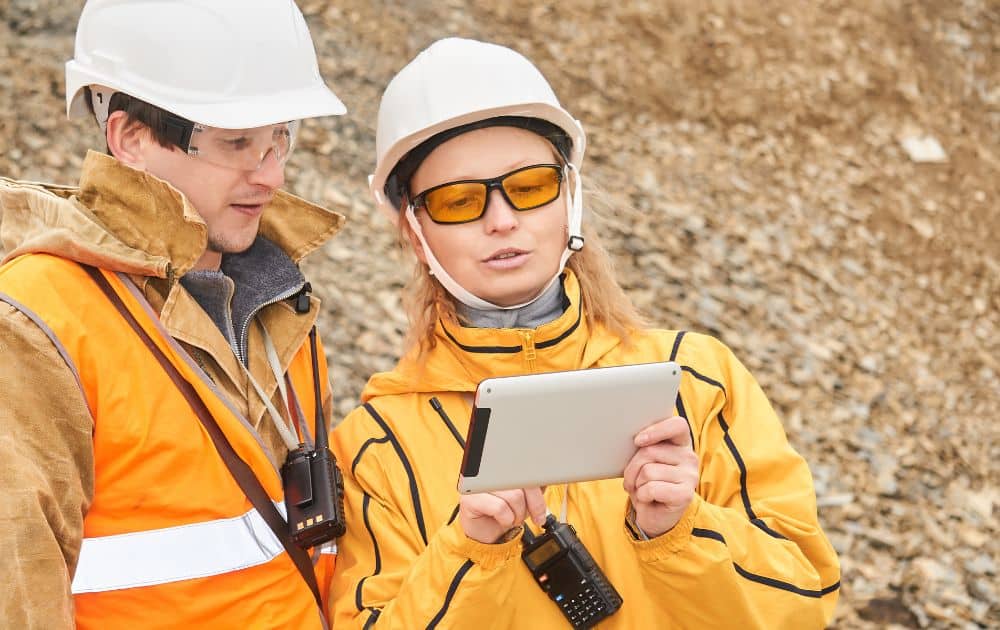Historically, mining operations relied heavily on manual labor and basic tools to extract valuable minerals from the earth. Miners would use hand tools such as picks, shovels, and hammers to break down rocks and extract ore. These mining methods were labor-intensive, time-consuming, and often hazardous.
The introduction of IT Service Provider technology has revolutionized the mining industry, enabling mining companies to overcome the limitations and challenges of traditional mining methods. By implementing technology in mining, companies also have made significant strides in enhancing mining safety measures.

Impact of Technology on Mining Operations
As technology continues to advance, it is revolutionizing various industries, including mining. In this section, we will explore two significant impacts of technology on mining operations: automation and robotics, and data analytics and predictive maintenance.
Automation and Robotics
The introduction of automation and robotics in mining has transformed the way operations are carried out. These technologies have the potential to improve efficiency, productivity, and safety within the mining industry. Automation allows for the use of advanced machinery that can perform tasks with precision and accuracy.
By utilizing autonomous vehicles and equipment, mining companies can increase operational efficiency and reduce the risk of accidents caused by human error. These vehicles can navigate through challenging terrains and hazardous environments, providing a safer working environment for miners.
Data Analytics and Predictive Maintenance
The mining industry generates vast amounts of data from various sources. Technology has enabled the collection and analysis of this data to extract valuable insights and optimize mining operations. Data analytics algorithms can identify patterns, correlations, and anomalies, providing valuable information for decision-making.
By implementing predictive maintenance systems, mining companies can reduce downtime and optimize equipment performance. These systems use data analysis techniques to monitor the condition of equipment in real-time. By detecting issues early on, proactive measures can be taken to prevent costly breakdowns.
Advancements in Safety Measures
As technology continues to revolutionize the mining industry, significant advancements have been made in improving safety measures. These advancements aim to protect mining personnel and enhance overall operational safety.
Remote Monitoring and Control
Remote monitoring and control systems have become essential tools in ensuring the safety of mining operations. Through the use of sensors and advanced data analytics, mining companies can monitor various aspects of their operations from a centralized control center. This allows for real-time monitoring of critical parameters.
By remotely monitoring these parameters, potential hazards can be identified early, allowing for timely intervention. For example, if abnormal gas levels are detected, personnel can be alerted, and evacuation procedures can be initiated promptly. This significantly reduces the risk of accidents and improves overall safety.
Improved Communication Systems
Wireless communication devices are now commonly used in mining operations. These devices enable instant communication between workers, supervisors, and emergency response teams, ensuring that critical information is conveyed promptly. In emergency situations, swift communication can be a matter of life and death.
Additionally, advancements in communication technology have paved the way for the implementation of underground communication networks. These networks utilize underground Wi-Fi and other wireless technologies to provide continuous communication throughout the mine.

Environmental Sustainability in Mining
As technology continues to reshape the mining industry, one of the significant areas of focus is environmental sustainability. The advent of new technologies has brought about innovative solutions to reduce the environmental footprint of mining operations.
Reduced Environmental Footprint
One way technology is contributing to a reduced environmental footprint is through the implementation of more efficient and precise mining techniques. For example, advanced imaging technologies, such as drones and satellite imagery, enable mining companies to accurately survey and map mining areas.
Furthermore, the use of advanced filtration and wastewater treatment systems helps to mitigate the pollution caused by mining activities. These systems can remove harmful substances from water sources, ensuring that the water released back into the environment meets strict quality standards.
Efficient Resource Management
One example of efficient resource management is the implementation of smart mining systems. By collecting real-time data on factors such as ore quality, equipment performance, and energy consumption, mining companies can make informed decisions to optimize resource utilization and minimize waste.
Implementing technology-driven resource management strategies also allows mining companies to improve energy efficiency. By utilizing renewable energy sources, optimizing energy distribution, and employing energy-efficient equipment, the mining industry can significantly reduce its carbon footprint.

Challenges and Opportunities
As technology continues to revolutionize the mining industry, it brings both challenges and opportunities for businesses in this sector. Two key areas that require attention and consideration are skilled workforce development and cost implications.
Skilled Workforce Development
As mining becomes more technologically driven, there is a growing demand for professionals with expertise in areas such as data analytics, robotics, and artificial intelligence. Ensuring that the workforce is equipped with the necessary skills is crucial for the successful implementation and operation of these technologies.
To address this challenge, mining companies are investing in training programs and partnerships with educational institutions to develop a skilled workforce. These initiatives focus on providing specialized training and education in emerging technologies relevant to the mining industry.
Cost Implications and Return on Investment
While technology brings numerous benefits to the mining industry, the initial investment required to adopt and implement advanced technologies can be substantial. Mining companies must carefully assess the costs associated with acquiring, integrating, and maintaining these technologies to ensure a positive return on investment.
To mitigate these challenges, companies can conduct thorough cost-benefit analyses, considering factors such as increased operational efficiency, productivity gains, and improved safety outcomes. It is important to evaluate the long-term benefits that technology can bring, such as reduced downtime and optimized resource allocation.
Let's Start Digging Into Your Mining Future with LK Tech!
The path to a tech-powered future in mining isn't without its challenges. Integrating complex technologies requires robust IT infrastructure and skilled personnel to manage it. This is where LK Technology comes in.
LK Technology is here to be your partner in progress. Contact us today to schedule a consultation and explore how our expert IT services in Cincinnati, Ohio can empower your mining operation to be safer and more productive!


